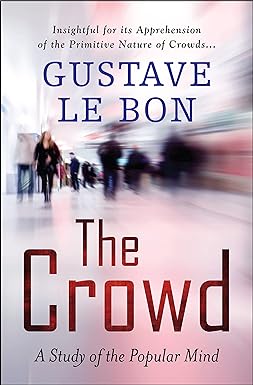
The Crowd
Originally published in 1895, ‘The Crowd’ is one of the most influential pieces of social psychology in history by Gustave Le Bon, a top French polymath whose areas of interest incorporated anthropology, psychology, sociology, medicine, invention, and physics. This book was highly instrumental in developing the social psychology field of study by analyzing, in detail, mass behavior. It had a deep impact not only on Freud but also on such twentieth-century masters of crowd control as Hitler and Mussolini—both of whom may have used its observations as a guide to inciting popular passions.
Although the volume concentrates on crowd psychology, it is also brilliantly enlightening on the effects of the generally accepted beliefs of a nation's citizenry on the processes of history. Among the topics covered here are general characteristics and mental unity of the crowd; the crowd's sentiments and morality; its ideas, reasoning power, and imagination; opinions and beliefs of crowds and the means used by leaders to persuade; classification of crowds, including criminal and electrical assemblages, as well as the functioning of criminal juries and parliamentary assemblies.
A must-read volume for students of history, sociology, law, and psychology, it will also be incalculable to politicians, statesmen, investors, and marketing managers.
BEST DEALS
About the Author
Gustave Le Bon (7 May 1841 – 13 December 1931) was a French social psychologist, sociologist, and amateur physicist. He was the author of several works in which he expounded theories of national traits, racial superiority, herd behavior and crowd psychology. His work on crowd psychology became important during the first half of the twentieth century when it was used by media researchers such as Hadley Cantril and Herbert Blumer to describe the reactions of subordinate groups to media. He also contributed to controversy about the nature of matter and energy. His book The Evolution of Matter was very popular in France (having twelve editions), and though some of its ideas—notably that all matter was inherently unstable and was constantly and slowly transforming into luminiferous ether—were used by some physicists of the time (including Henri Poincaré), his specific formulations were not given much consideration. In 1896 he reported observing a new kind of radiation, which he termed "black light" (not the same as what modern people call black light today), though it was later discovered not to exist.












